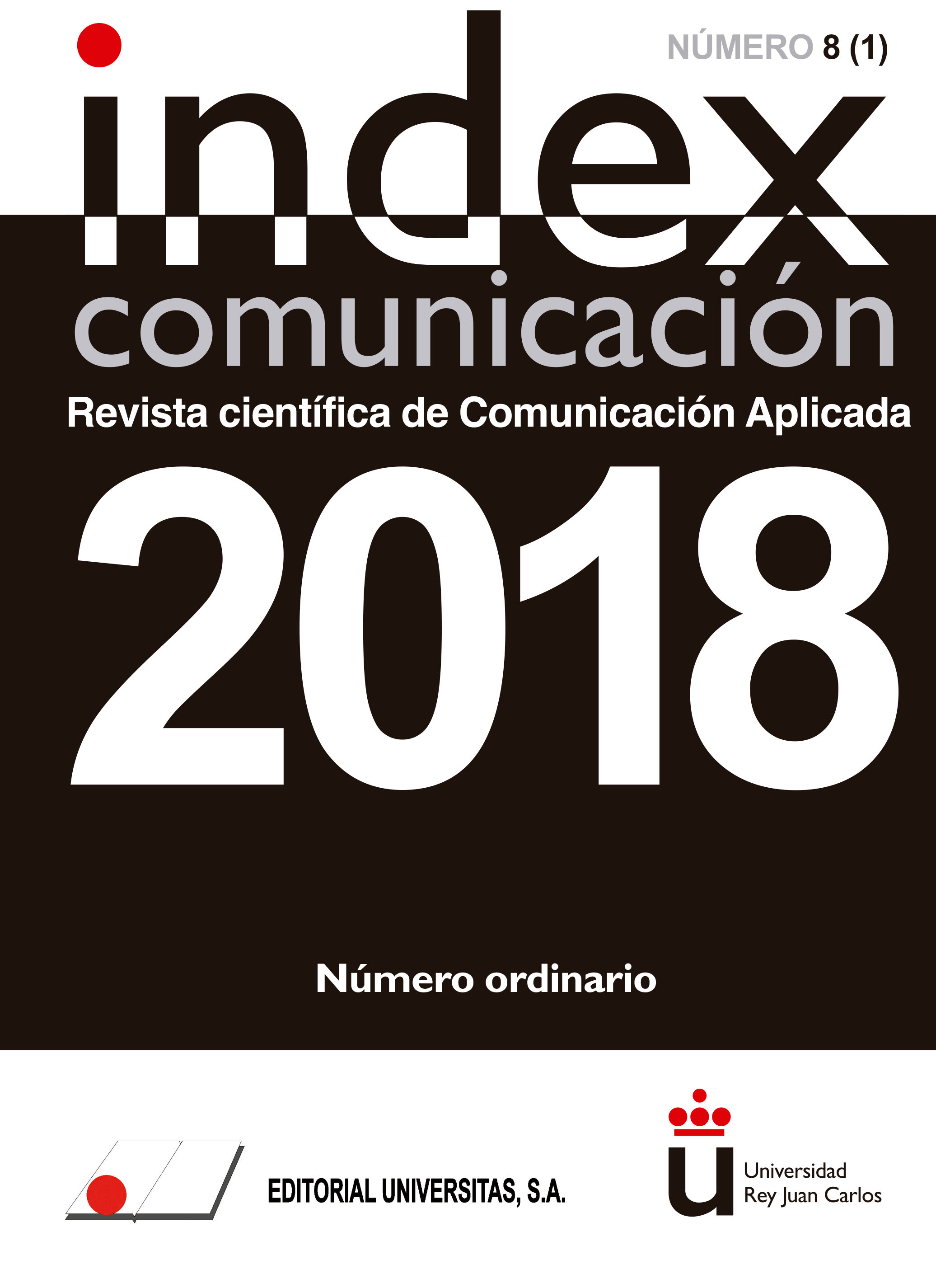The accessibility of digital communications media in Spain: the responsibility of journalists in the generation of inclusive content
Keywords:
accessibility, barrier, disability, communication media, journalist, web,Abstract
After analysing reference studies on the accessibility of digital communications media in Spain and consulting with accessibility experts, this study identifies the access barriers for disabled people, the elderly and other groups that can be generated by journalists when producing contents for the web environment. The main barriers which can be affected by the professional practice of journalists include the following: imprecise hyperlinks, image links without text alternatives, no new window alert, images with missing or inadequate text alternatives, incorrect heading structure, inadequate marking of lists, images with printed text, poor image contrast, the semantic use of colour without offering an alternative and incorrect marking of data tables. Barriers are identified in relation to fonts that are dependent on website layout, but contain properties that can be modified by journalists. Barriers that arise in multimedia content owing to the lack of subtitles or audio description are also detected, although the possibility of including such functions requires both knowledge and specific tools that are currently beyond the reach of journalists.
Metrics
References
AENOR (2018). UNE 153101:2018 EX. Lectura fácil. Pautas y recomendaciones para la elaboración de documentos.
AENOR (2012). UNE 139803:2012. Requisitos de accesibilidad para contenidos en la Web.
BOE (2013). Real Decreto Legislativo 1/2013, de 29 de noviembre, por el que se aprueba el «Texto Refundido de la Ley General de derechos de las personas con discapacidad y de su inclusión social». Boletín Oficial del Estado. Madrid, 3 de diciembre de 2013. Recuperado desde: https://goo.gl/Qim9Pr
Cabañero, A. A. y Luján, S. (2012). Estudio sobre la accesibilidad de los sitios web de medios de comunicación. Repositorio Institucional de la Universidad de Alicante. Recuperado desde: https://goo.gl/wzzGe7
Campo, C. J. (2014). HTML5 para periodistas: Manual de uso práctico. Estrategia del Contenido. ISBN: 8461680618.
Carreras, O. (6 de junio de 2018). WCAG 2.1, recomendación hasta las WCAG 3.0. [Entrada en blog] Usable y Accesible. Recuperado desde: https://goo.gl/TddZRD
Cebrián, M. (2009). Comunicación interactiva en los cibermedios. Comunicar, 33, v. XVII. Recuperado desde: https://goo.gl/h5yjwA
CERMI (2011). Las nuevas fronteras de la accesibilidad a las tecnologías de la información y la comunicación. Estudio de prospectiva sobre la accesibilidad en la sociedad de la información y las TIC. Recuperado desde: https://goo.gl/FYAuwt
Codina, L.; Pedraza, R.; Díaz-Noci, J.; Rodríguez-Martínez, R.; Pérez-Montoro, M. y Cavaller-Reyes, V. (2014). Sistema Articulado de Análisis de Cibermedios (SAAC): Una propuesta sobre el qué y el cómo para estudiar medios de comunicación digitales. Hipertext.net: Revista Académica sobre Documentación Digital y Comunicación Interactiva,12. Recuperado desde: https://goo.gl/knnr1r
Díaz-Noci, J. (2006). Hipertexto y redacción periodística: ¿Un nuevo campo de investigación? Razón y palabra, 48.
Discapnet (2007). Accesibilidad en los diarios digitales españoles. Observatorio de Accesibilidad TIC. Recuperado desde: https://goo.gl/6woBqP
Discapnet (2016). Accesibilidad de los principales medios digitales de comunicación. Observatorio de Accesibilidad TIC. Recuperado desde: https://goo.gl/CAmFMx
González, S. (2008). Guía de Accesibilidad a los Medios de Comunicación de Personas con Discapacidad Sensorial. ONCE Málaga y SFSM. Recuperado desde: http://guiacomunicacion.lgperea.com
Gutiérrez, M. L. E. (2015). Accesibilidad no intrusiva en la comunicación audiovisual en la web (tesis doctoral). Universidad Complutense de Madrid, Madrid, España.
Hassan, Y (2003). El título de la página. No sólo usabilidad, 2. Recuperado desde: https://goo.gl/Ew2LwL
Instituto Nacional de Estadística (2008). Encuesta sobre discapacidades, deficiencias y estado de salud. Recuperado desde: http://www.ine.es/daco/daco42/discapa/tara.pdf
Nielsen, J. (2000). Usabilidad. Diseños de sitios web. Madrid: Prentice Hall, (España). ISBN: 9788420530086.
Organización Mundial de la Salud (2011). Informe mundial sobre discapacidad. Recuperado desde: https://goo.gl/RZbF9A
Orero, P. (2007). La accesibilidad en los medios: una aproximación multidisciplinar. TRANS. Revista de Traductología, II, 11-14.
Persson, H.; Åhman, H.; Yngling, A. A. y Gulliksen, J. (2015). Universal design, inclusive design, accessible design, design for all: different concepts ―one goal? On the concept of accessibility― historical, methodological and philosophical aspects. Universal Access in the Information Society, 14(4), 505-526.
Sánchez, J. M.; Marcos, J. C. y Villegas, R. (2007). Los recursos fotográficos en los periódicos digitales: valores de la fotografía digital. Ibersid. Recuperado desde: https://goo.gl/ochoch
Sánchez-García, P.; Campos-Domínguez, E. y Berrocal, S. (2015). Las funciones inalterables del periodista ante los perfiles multimedia emergentes. Revista Latina de Comunicación Social, 70. Recuperado desde: https://goo.gl/TZ6SaM
Tejedor, S. (2010). Ciberperiodismo: Libro de estilo para Ciberperiodistas. Santo Domingo (República Dominicana): Itla Editorial. Recuperado desde: https://goo.gl/XqqU9e
W3C (2008). Web Content Accessibility Guidelines 2.0. Recuperado desde: https://goo.gl/dbia9A
Published
How to Cite
Issue
Section
License
Authors who submit to this journal agree to the following terms:
Authors retain copyright and ensure the magazine's right to be the first publication of the work as licensed under a Creative Commons Attribution-NoComercial 4.0 International License that allows others to share the work with an acknowledgment of authorship of the work and the initial publication in this magazine, with no commercial purpose.
Authors can establish separate additional agreements for non-exclusive distribution of the version of the work published in the magazine (for example, to an institutional repository or publish it in a book), with an acknowledgment of its initial publication in this journal.
It allows and authors are encouraged to disseminate their work electronically (eg, in institutional repositories or on their own website) prior to and during the submission process, as it can lead to productive exchanges, as well as a citation more early and most of the published work (See The Effect of Open Access).















